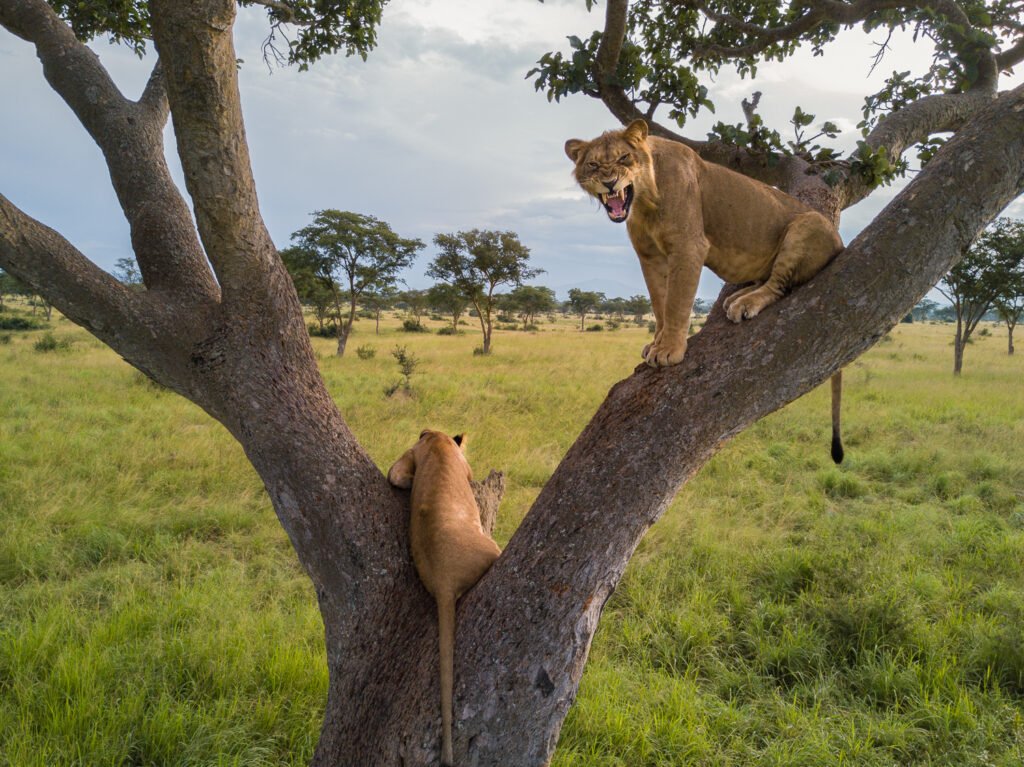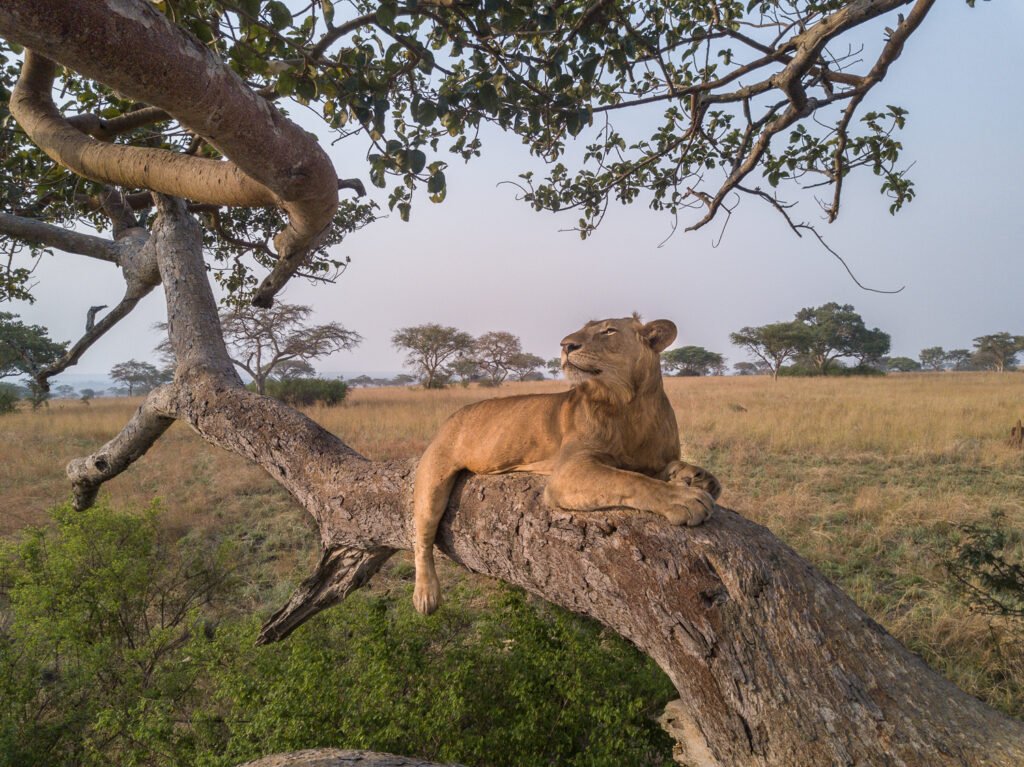Across the globe, lions have lost more than 90% of the land they once roamed. In Uganda, they are now considered a vulnerable species, with only about 400–500 left in the wild. Their future is under pressure from shrinking habitats, conflict with people over livestock, and illegal wildlife trade.
Every year on August 10th, the world marks World Lion Day, a time to celebrate these kings and queens of the wild, reflect on the threats they face, and talk about how we can keep them safe for generations to come.

Uganda’s Lion Strongholds
Uganda is fortunate to still have healthy lion populations in several parks, including:
Queen Elizabeth National Park – famous for the tree-climbing lions of Ishasha.
Murchison Falls National Park – home to large prides on wide, golden savannahs.
Kidepo Valley National Park – remote and dramatic, with lions roaming against a backdrop of rugged mountains.Lake Mburo National Park – where a small but important population still survives.
The Ishasha Wonder
In the southern reaches of Queen Elizabeth National Park, the Ishasha sector has amazed scientists and travellers for decades. Here, lions are often found lounging high in the branches of giant fig and acacia trees , a behaviour rarely seen elsewhere.
Why they climb is still a matter of research. Some say it’s to escape the heat, avoid biting insects, or get a better view of prey on the plains. Whatever the reason, this habit is so rare that it’s regularly seen only here in Ishasha and in a small part of northern Tanzania, making these lions a true wildlife treasure.

See Them for Yourself
Reading about the Ishasha lions is one thing, watching them in their natural home is unforgettable. We create safaris that bring you face-to-face with this rare wonder, while also showcasing Uganda’s other breathtaking wildlife.
Browse our Safaris or talk to our team to start planning your journey.



